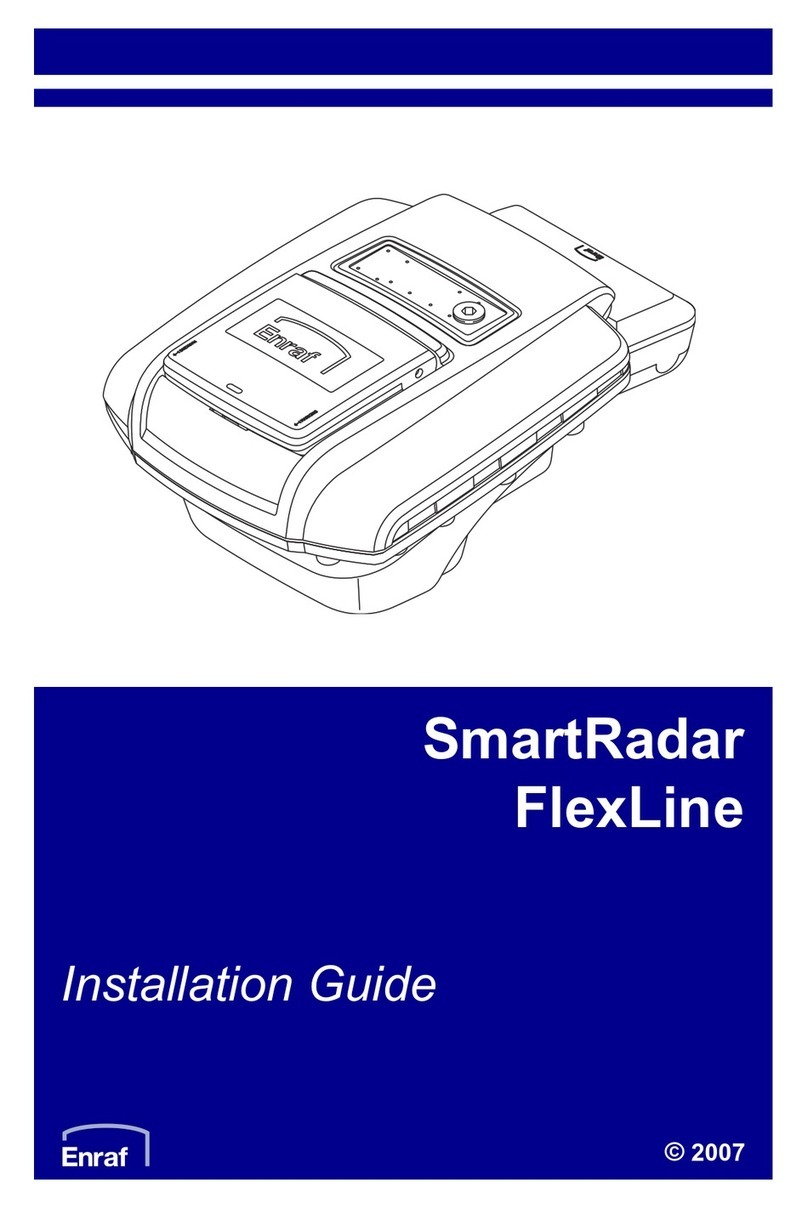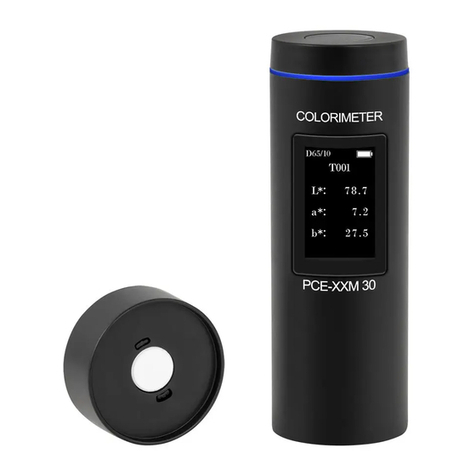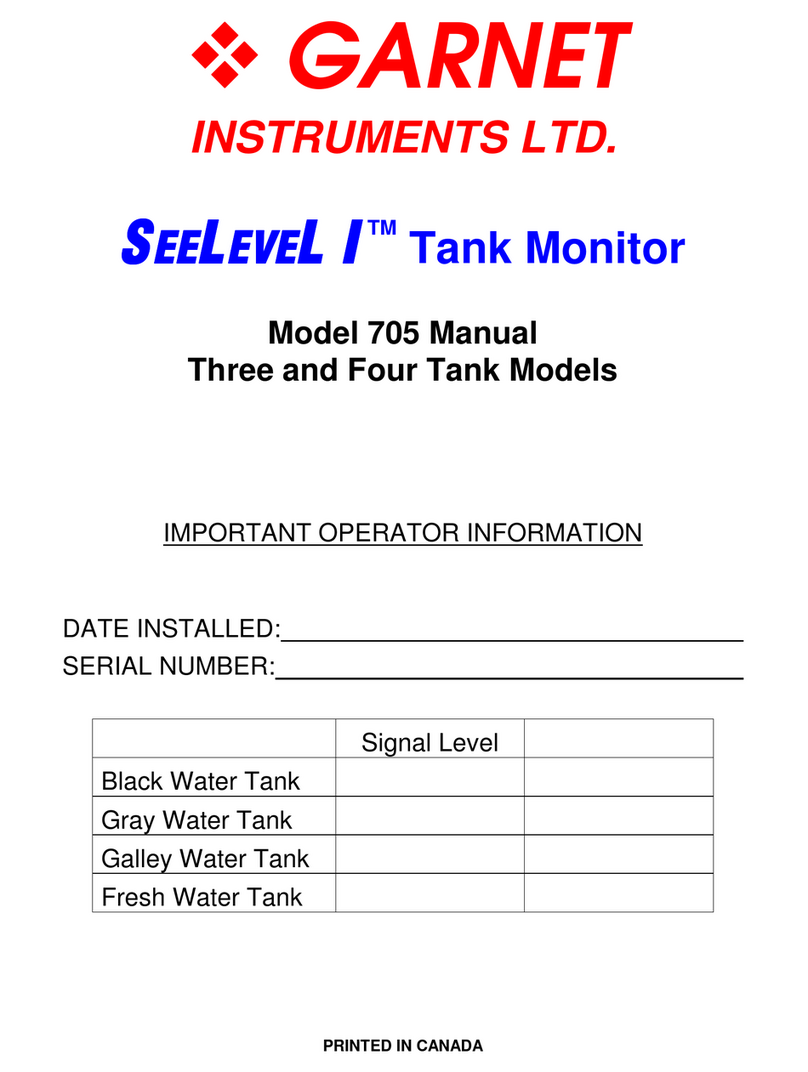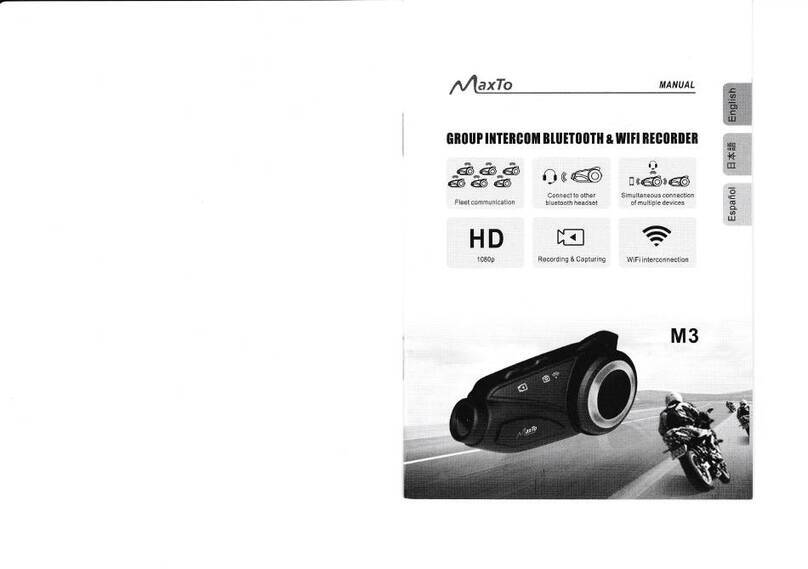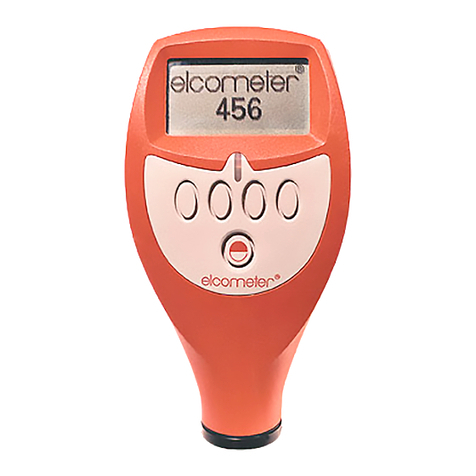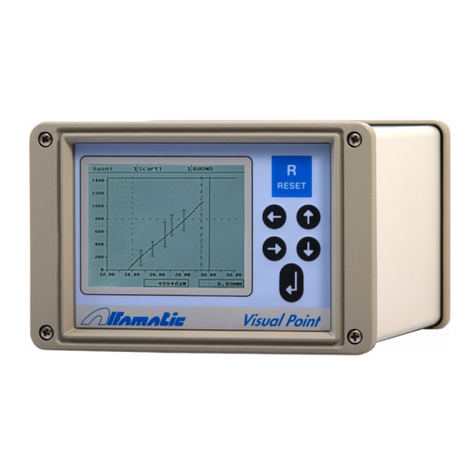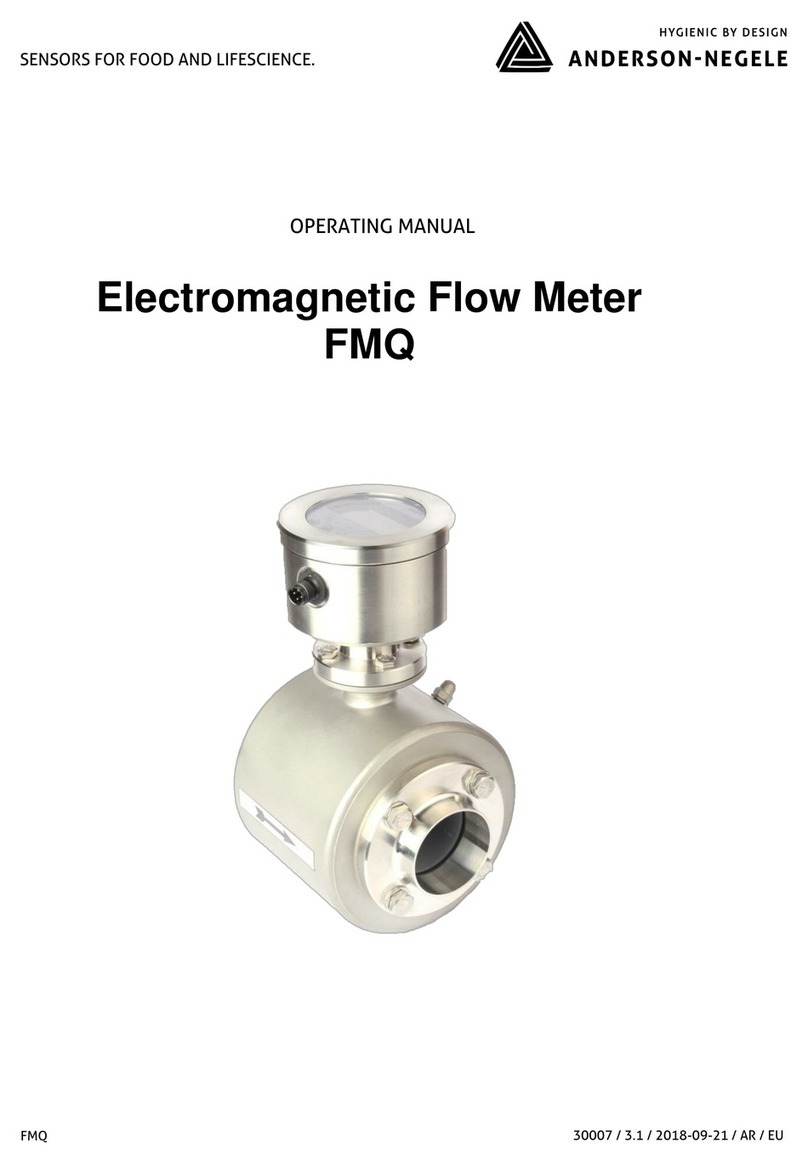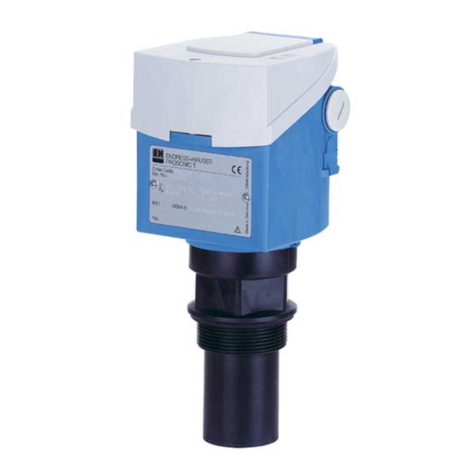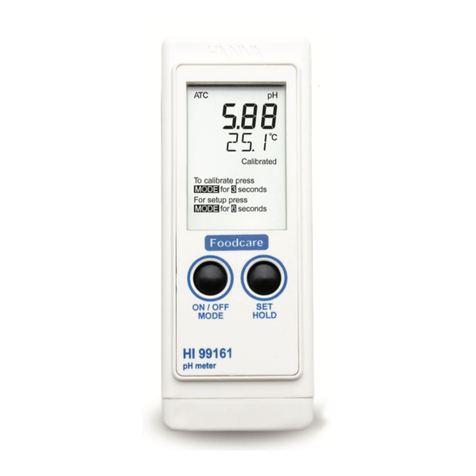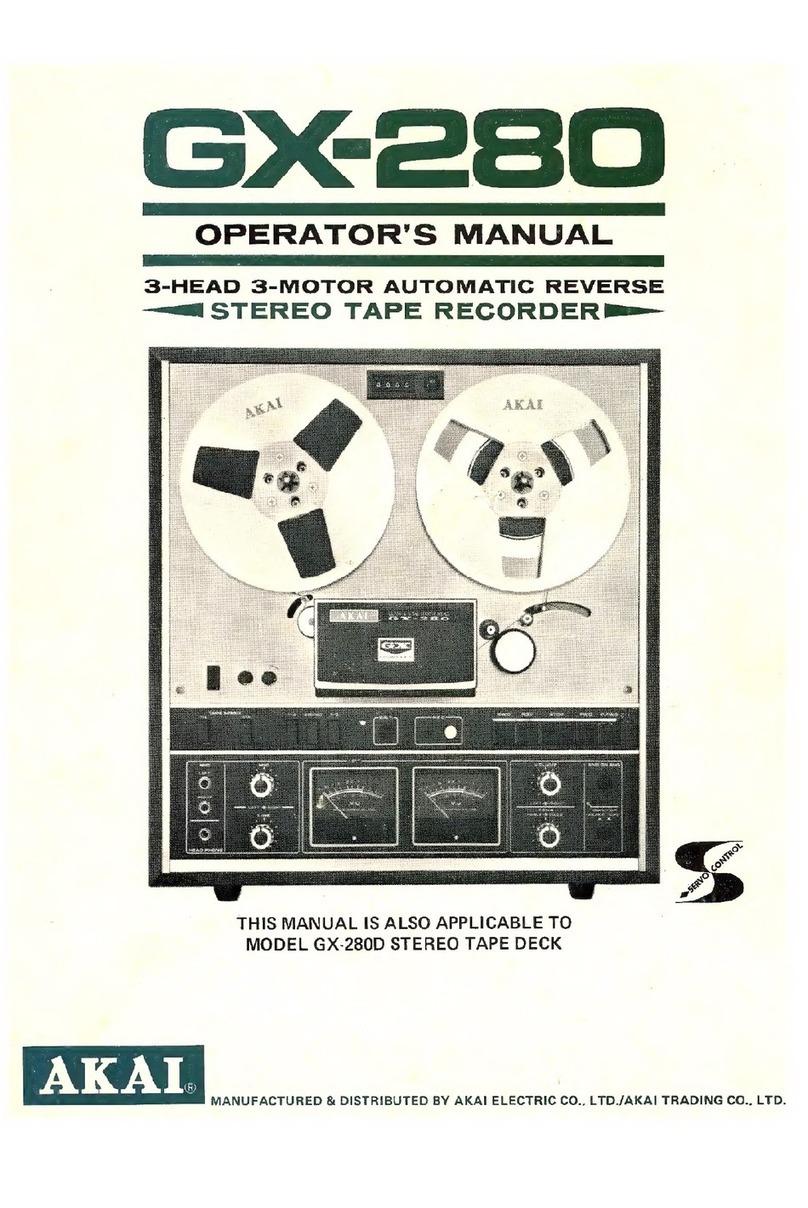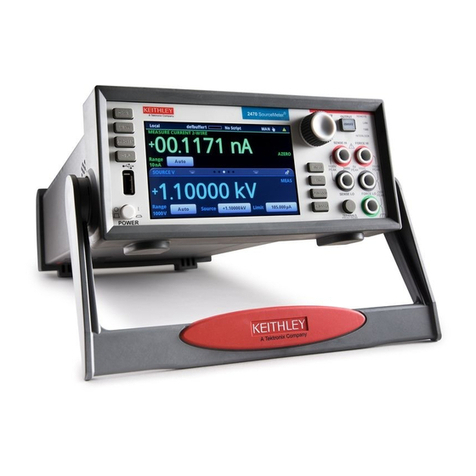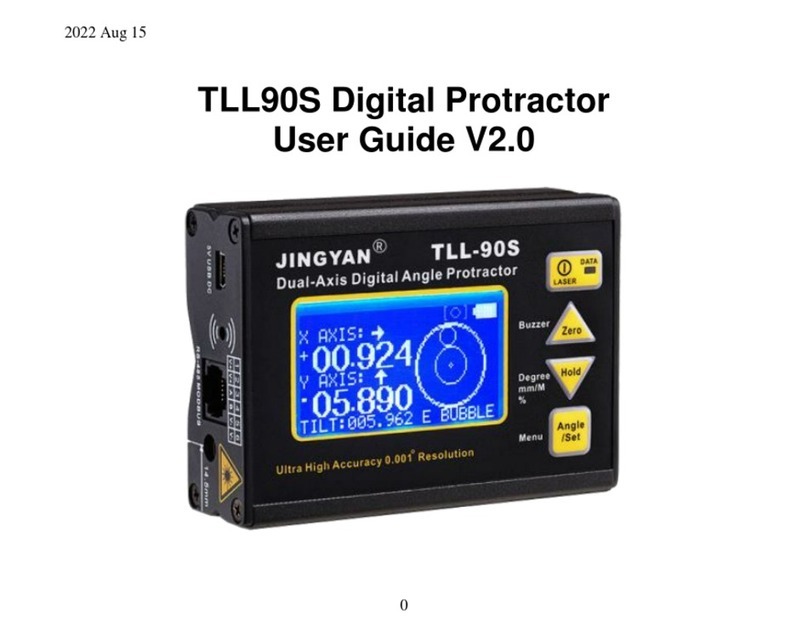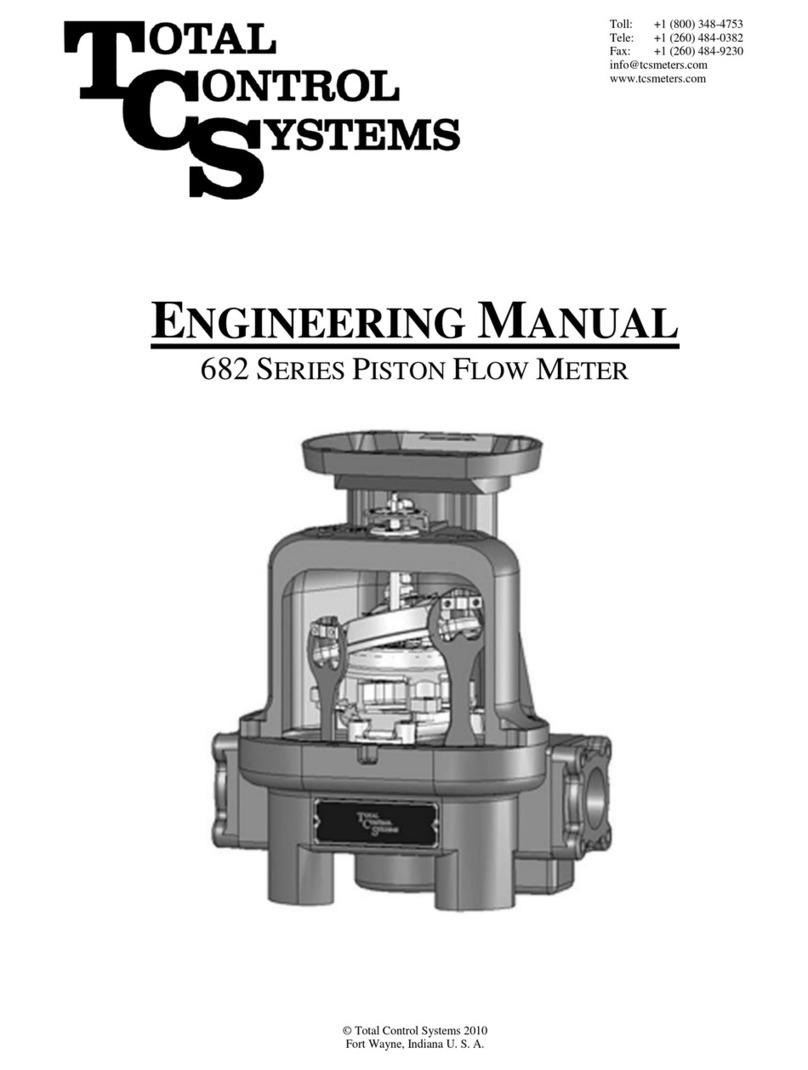enraf 854 ATG Series User manual

Instruction manual 854 ATG Page 1
Instruction manual
series 854 ATG
level gauge
December 2005
Part no. 4416.220
Rev. 3
Enraf B.V.
P.O. Box 812
2600 AV Delft
Netherlands
Tel. : +31 15 2701 100
Fax : +31 15 2701 111
Website : http://www.enraf.com

Page 2
Copyright 1999 - 2005 Enraf B.V. All rights reserved.
Reproduction in any form without the prior consent of Enraf B.V. is not allowed. This manual is for information
only. The contents, descriptions and specifications are subject to change without notice. Enraf B.V. accepts no
responsibility for any errors that may appear in this manual.
The warranty terms and conditions applicable in the country of purchase in respect to Enraf B.V. products are
available from your supplier. Please retain them with your proof of purchase.

Preface
Instruction manual 854 ATG Page 3
Preface
This manual is intended for technicians involved with the commissioning and service of the Enraf series
854 Advanced Technology Gauge.
A description preceding the technical procedures gives the technical information necessary to understand its
functioning. It is recommended to read this description prior to performing any of the procedures.
For mechanical and electrical installation of the 854 ATG, refer to the Installation guide 854 Advanced
Technology Gauge. This manual describes the commissioning, maintenance and trouble shooting of the basic
854 ATG level measurement. Other features such as: level alarm outputs, analog level output, temperature
measurement, pressure measurement, etc. are describes in separate manuals. For an overview, refer to the list
of related documents in Appendix F.
Legal aspects
The information in this manual is copyright property of Enraf B.V., Netherlands.
Enraf B.V. disclaims any responsibility for personal injury or damage to equipment caused by:
Deviation from any of the prescribed procedures;
Execution of activities that are not prescribed;
Negligence of the general safety precautions for handling tools, use of electricity and microwave radiation.
EC declaration of conformity
This instrument is in conformity with the protection requirements of EC Council Directive 89/336/EEC.
The CE conformity marking fulfills the provisions of
EN 50081-2 Generic Emission Standard
EN 50082-2 Generic Immunity Standard
73/23EEC Low Voltage Directive
when installed, maintained and applied according to requirements as specified in this manual.
Additional information
Please do not hesitate to contact Enraf or its representative if you require additional information.

Table of contents
Page 4
Table of contents
Preface............................................................................. 3
1 Introduction ......................................................................... 6
1.1 Principleofmeasurement ........................................................ 6
1.1.1 Levelmeasurement...................................................... 7
1.1.2 Interfacebetweentwoproducts ............................................ 7
1.1.3 Relativedensity ......................................................... 7
1.2 Optionalfunctions .............................................................. 7
1.3 Remotemonitoring.............................................................. 8
1.4 Approvals(FM,CENELEC) ....................................................... 8
2 Safety .............................................................................. 9
2.1 Safety aspects of the 854 Advanced Technology Gauge . . . . . . . . . . . . . . . . . . . . . . . . . . . . . . . . 9
2.2 Personalsafety ............................................................... 10
2.3 Safetyconventions............................................................. 10
3 Commissioning...................................................................... 11
3.1 Checks before starting the commissioning . . . . . . . . . . . . . . . . . . . . . . . . . . . . . . . . . . . . . . . . . . 11
3.2 Installation of measuring drum and displacer . . . . . . . . . . . . . . . . . . . . . . . . . . . . . . . . . . . . . . . . 12
3.2.1 Tools ................................................................ 12
3.2.2 Installationofmeasuringdrum ............................................ 12
3.2.3 Installationofdisplacer .................................................. 13
3.2.4 Unlocking (locking) the motor block . . . . . . . . . . . . . . . . . . . . . . . . . . . . . . . . . . . . . . . . 13
3.3 Programming(configuring)thegauge .............................................. 14
3.3.1 Introductionintoprogramming............................................. 14
3.3.2 Applypowertothe854ATG .............................................. 16
3.3.3 Selecting dimension and decimal separator . . . . . . . . . . . . . . . . . . . . . . . . . . . . . . . . . . 17
3.3.4 Tankandgaugedata.................................................... 18
3.3.5 Alarmsettings ......................................................... 20
3.3.6 Ullagereadout ......................................................... 21
3.3.7 Display control and password protection . . . . . . . . . . . . . . . . . . . . . . . . . . . . . . . . . . . . . 22
3.4 Levelcalibration............................................................... 23
3.4.1 Standardlevelcalibration ................................................ 23
3.4.2 Level calibration with a tank top reference stop . . . . . . . . . . . . . . . . . . . . . . . . . . . . . . . 23
3.4.3 Level calibration using the top of ball valve . . . . . . . . . . . . . . . . . . . . . . . . . . . . . . . . . . . 24
3.4.4 Interfacemeasurement .................................................. 25
4 Operation .......................................................................... 26
4.1 Display ...................................................................... 26
4.1.1 XPUdisplay ........................................................... 27
4.1.2 XPU-2display ......................................................... 27
4.2 Repeatabilitytest .............................................................. 29
4.3 Locktest..................................................................... 29
4.4 Freezeandblockcommands..................................................... 30
4.5 Unlock ...................................................................... 30
4.6 Interfacemeasurement ......................................................... 31
4.7 Dipmode .................................................................... 31
4.8 Verifylevelcalibration .......................................................... 32
4.8.1 Verify level calibration against a tank top reference stop . . . . . . . . . . . . . . . . . . . . . . . . 32
4.8.2 Verify level calibration on top of ball valve . . . . . . . . . . . . . . . . . . . . . . . . . . . . . . . . . . . . 32
4.9 Dataitemsandoperationalcommands ............................................. 33

Table of contents
Instruction manual 854 ATG Page 5
5 Maintenance........................................................................ 34
5.1 Preventivemaintenance ........................................................ 34
5.2 Instrumentcovers ............................................................. 35
5.3 Drumcompartment ............................................................ 36
5.3.1 Detaileddescription..................................................... 36
5.3.2 Removingthemeasuringdrum ............................................ 37
5.3.3 Replacingthedrumbearings.............................................. 38
5.4 Theelectroniccompartment ..................................................... 39
5.4.1 Detaileddescription..................................................... 39
5.4.2 Dismantling the electronic compartment . . . . . . . . . . . . . . . . . . . . . . . . . . . . . . . . . . . . . 40
5.4.3 Replacingsoftware ..................................................... 41
5.4.4 InitializingNOVRAM .................................................... 41
5.5 Calibratingforcetransducer...................................................... 42
5.6 Synchronizingthereferenceencoder .............................................. 43
6 Troubleshooting .................................................................... 44
6.1 Problemswithdisplacermovement ................................................ 44
6.2 XPUerrorcode(itemEP) ....................................................... 45
6.3 SPUerrorcode(itemES) ....................................................... 45
6.4 SPUstatusrequest(itemQS) .................................................... 46
AppendixA Articleandpartnumbers ................................................. 47
Appendix B Additional information on displacers . . . . . . . . . . . . . . . . . . . . . . . . . . . . . . . . . . . . . . . . 50
AppendixC ASCIItable ........................................................... 52
AppendixD Displayformats ........................................................ 53
AppendixE PCBlayout............................................................ 58
AppendixF Relateddocuments ..................................................... 59
Index ............................................................................. 60

Introduction
Page 6
Figure 1.1 Principle of measurement
1 Introduction
The Enraf 854 ATG (Advanced Technology Gauge) measures the liquid level and can be programmed to
measure two additional interface levels.
The 854 ATG has four programmable level alarms, and also provides diagnostic information. This information
can be displayed on the internal display, the Portable Enraf Terminal (PET) as well as on remote systems.
Optionally, the instrument can be provided with software for density measurement of the stored product.
The optional MPU board provides a 4 - 20 mA analog level output and can be used to adapt the 854 series level
gauge for control applications or analog recorders.
Spot temperature can be measured when the 854 ATG is equipped with an optional TPU-2 board (Temperature
Processor Unit), or HSU board (HART and Spot temperature processor Unit).
Average product temperature as well as average gas temperature measurement can be performed when the
854 ATG is equipped with the optional MPU, HPU or OPU board and a 862 MIR or 862 MIT unit.
Honeywell ST3000 series pressure transmitter can be connected via the optional OPU board.
®
Via the optional HPU or HSU board, HART pressure transmitter and/or a HART compatible external water
TM
bottom probe can be connected.
1.1 Principle of measurement

Introduction
Instruction manual 854 ATG Page 7
Refer to figure 1.1.
The principle is based on detection of variations in the buoyancy of a displacer. The displacer is suspended from
a strong, flexible measuring wire which is stored on a precisely grooved measuring drum.
The shaft of the drum is connected to the stepper motor via a magnetic coupling.
The apparent weight of the displacer is measured by a force transducer. The actual output of the force
transducer is compared with a desired value for the apparent weight of the displacer. If a discrepancy exists
between measured and desired value, an advanced software control module adjusts the position of the stepper
motor.
1.1.1 Level measurement
A level variation of product, in which the displacer is partially immersed, causes a change in buoyancy, which will
be detected by the force transducer. The resulting difference between measured and desired value will cause a
variation in the position of the stepper motor and consequently raise or lower the position of the displacer until
the measured value equals the desired value.
To avoid oscillations, a certain hysteresis and integration time is software adjustable. This results in a stable and
accurate averaged level measurement.
The stepper motor turns one revolution for every 10 mm of vertical movement of the displacer.
One revolution is divided into 200 steps, therefore one step is equivalent to 0.05 mm. This resolution is direct
consequence of the stepper motor principle. The correct functioning of the stepper motor is continuously
checked. This is achieved by decoding the unique pattern of an encoder disk mounted on the motor shaft.
1.1.2 Interface between two products
Measurement of the interface between two products is achieved by sending an interface command to the gauge.
This causes the stepper motor processor to move the displacer to a position where the apparent weight of the
displacer matches a pre-programmed set point.
1.1.3 Relative density
To measure the relative density, the displacer is positioned at specific heights and the apparent weight of the
displacer at each height is measured. Knowing the volume of the displacer, its weight in air, and the measured
apparent weight, the relative density of the product at each position of the displacer can be calculated.
The software for the density measurement is available as an option.
1.2 Optional functions
Optional functions can be added in the 854 ATG when using one of the following optional boards form the
854 family: TPU-2, MPU, HPU, OPU or HSU board.
Alarm relays are optionally available on the SPU II board. Density measurement is an optional module of the
SPU software. An XPU-2 board (in stead of the standard XPU board) is required with the following options:
external HART water bottom probe (e.g. Enraf 964 WaterScout), RS-232C/RS-485 communication, and
connection for a 977 Tank Side Indicator.
The table on next page gives an overview of all options and related manuals.

Introduction
Page 8
Option Board Refer to
Level alarm output relays SPU II Instruction manual SPU II Hard alarm output contacts
(or digital outputs)
Density measurement SPU II Instruction manual 854 density option
Analog level output (4 - 20 mA) MPU Instruction manual MPU analog 4 - 20 mA
Spot temperature measurement TPU-2 or Instruction manual TPU-2 / HSU option board
HSU
Average temperature measurement MPU or Instruction manual 862 MIT
via 864 MTT and 862 MIT HPU or
OPU
Average temperature measurement MPU or Instruction manual 862 MIR
via 863 MRT and 862 MIR HPU or
OPU
Pressure measurement for mass, HPU or Instruction manual HIMS
density and/or vapour pressure HSU
via HART protocol
Pressure measurement for mass, OPU Instruction manual HIMS
density and/or vapour pressure
via Honeywell DE protocol
Water bottom measurement via HPU or Instruction manual Water bottom measurement
external probe HSU and via capacitive probe
XPU-2
Connection for 977 TSI Tank Side XPU-2 Instruction manual 977 TSI Tank Side Indicator
Indicator
RS-232C / RS-485 communication XPU-2 Instruction manual XPU-2 option RS-232C / RS-485
1.3 Remote monitoring
Central monitoring of the 854 ATG is possible via tank inventory systems such as ENTIS+ and Entis Pro.
Remote display can be achieved by using the 877 FDI field indicator, the 977 TSI tank side indicator or the 878
CPI panel indicator.
1.4 Approvals (FM, CENELEC)
The Enraf 854 Advanced Technology Gauges are certified by official testing institutes as Factory Mutual and
PTB (CENELEC) to be explosion proof (suitable for zone 0). The gauges are also approved and certified by
Weights and Measures (W&M) or Custom and Excise authorities for legal use and custody transfer.

Safety
Instruction manual 854 ATG Page 9
Warning
The 854 ATG is designed to measure the liquid level in storage tanks. The instrument is
suitable for flammable liquids (refer to the explosion proof certification data below).
For other applications contact Enraf.
Caution
The 854 ATG is an explosion proof instrument with intrinsically safe output/input circuits.
Modification to the instrument may only be carried out by trained personnel which is authorized by Enraf.
Failure to adhere to this will invalidate the approval certificate.
The safety approval can become invalid when the instrument housing is damaged.
Directly inform Enraf in this case to verify if the instrument still can be used.
2 Safety
2.1 Safety aspects of the 854 Advanced Technology Gauge
For the medium pressure versions (till 6 bar), the 854 ATG drum compartment housing is of aluminium, and for
the chemical version the drum housing is of stainless steel.
For the high pressure version (max 40 bar), the 854 ATG housing is of stainless steel.
The housing of the 854 ATG is explosion proof:
EEx de IIB T6 acc. to CENELEC and in addition zone 0, certified by PTB Germany
(PTB no.: Ex-89.C.1035)
Class I, Division 1, Groups B, C, & D acc. to ANSI/NFPA no. 70, certified by Factory Mutual Research
USA (FM no.: 3Q2A9.AX).
Ex d IIB T6, IP54, Class I Zone 1, according to SAA.
The environmental conditions for the 854 ATG are:
ambient temperature : -40 to +85 °C (-40 to +185 °F)
operating pressure : max. 6 bar for medium pressure and chemical version
max. 40 bar for high pressure version
relative humidity : 0 - 100 %
ingress protection : IP65 (NEMA 4), suitable for outdoor installation
over voltage category : II
pollution degree : I
The drum compartment, which is in contact with the tank atmosphere, is separated from the electronic
compartment. A magnet coupling transfers the measuring drum movement (and thus the displacer movement) to
the electronic compartment.
The wiring for intrinsically safe options, such as temperature or pressure measurement, is fed via two separate
cable entries.
Optionally, the covers of the drum compartment, electronic compartment and terminal compartment can be
provided with blocking facilities which prevents unauthorised opening.
Programming (configuration) of the 854 ATG can be done by the 847 PET (Portable Enraf Terminal), which is an
intrinsically safe device and is connected to the 854 ATG via an infra-red coupling.

Safety
Page 10
Warning
In hazardous areas it is compulsory to use personal protection and safety gear such as:
hard hat, fire resistive overall, safety shoes, safety glasses and working gloves.
Avoid possible generation of static electricity. Use non-sparking tools and explosion proof testers.
Do not open any of the instrument covers while power is still connected.
Never start working before the work permit is signed by all parties.
Pay attention to the kind of product in the tank. If any danger for health, wear a gas mask
and take all necessary precautions.
2.2 Personal safety
Safe execution of the procedures in this manual requires technical experience in handling tools, and knowledge
of safety regulations in handling electrical installation in hazardous environments.
The sequence of steps in a procedure may also be important from the point of view of personal safety and
prevention of damage; it is therefore advised not to change the sequence of procedure steps or modify any
procedure in any other way.
2.3 Safety conventions
"Warnings", "Cautions", and "Notes" have been used throughout this manual to bring special matters to the
immediate attention of the reader.
A Warning concerns danger to the safety of the technician or user;
A Caution draws attention to an action which may damage the equipment;
A Note points out a statement deserving more emphasis than the general text, but does not deserve a
"Warning" or a "Caution".

Commissioning
Instruction manual 854 ATG Page 11
Caution
Keep screw thread from the compartment covers free from dirt.
Grease them lightly with an acid-free grease before closing the instrument.
When closing, turn the covers counter-clockwise until the thread clicks into place, then turn clockwise.
3 Commissioning
3.1 Checks before starting the commissioning
Examine the mechanical and electrical installation after the 854 ATG is installed on the tank.
Refer to the installation guide 854 Advanced Technology Gauge.
Check the correct orientation of the gauge with respect to the tank.
Check that the gauge is leveled within 2°.
Check that the O-ring and gaskets are supplied.
Check that the mains voltage selector of the 854 ATG indicates the local mains supply.
Check the connections of all electrical cabling.
Check the ground connection of the 854 ATG to the tank.
Check that non-used cable inlets are sealed with appropriate stopping plugs.
Close carefully all covers (mind the O-rings) before any electrical power is applied.

335
335
10
8
2
9
11
41
7
35
6
Commissioning
Page 12
Figure 3.1 Tool set for 854 ATG (part no.1854.062)
Figure 3.2 Installing the drum
3.2 Installation of measuring drum and displacer
3.2.1 Tools
It is recommended to use an 847 PET (Portable Enraf Terminal) to load the different parameters.
A tool set for commissioning and maintenance is available from Enraf (refer to figure 3.1).
Item Description
1 Allen key 2 mm
2 Allen key 3 mm
3 Allen key 4 mm
4 Allen key 5 mm
5 Allen key 8 mm
6 Drum bearing puller
7 Test magnet
8 Screwdriver for Allen key screws M4
9 Screwdriver for Allen key screws M6
10 Pipe wrench 27 mm
11 Tommy bar
3.2.2 Installation of measuring drum
Remove the drum compartment cover (rear cover).
Check whether the drum shaft is properly positioned in the drum.
Attach the smallest of the four test weights (or another small
weight) to the measuring wire, remove the rubber band securing
the measuring wire and feed the wire and test weight through the
neck of the gauge (refer to figure 3.2).
Insert the measuring drum onto its bearings.
Check the axial free-play of the drum as follows:
Push the drum towards the magnet cap in such a way that the
drum shaft meets the magnet cap. Release the drum.
Bring the drum in a slight vibration. The drum and drum shaft
should now move towards you with a axial movement of
minimum 1 mm and maximum 2.5 mm.
Note the engraved drum circumference value on a piece of paper for later use. There are several numbers
engraved on the measuring drum. The number you are looking for has a value of approximately 338 mm
(for example: 338.028).

Motor locked
Motor unlocked
span
wire
Commissioning
Instruction manual 854 ATG Page 13
Figure 3.3 Mounting displacer
Figure 3.4 Motor block (un)locked
3.2.3 Installation of displacer
If a density displacer is used, note the engraved displacer weight
and displacer volume on a piece of paper for later use.
Remove the test weight and attach the displacer to the wire
through a mounting hatch.
Note:
If there is no mounting hatch available, the displacer can be
installed by temporarily removing the gauge from the nozzle.
To provide electrical contact between the measuring wire and
displacer, thus permitting the discharge of static electricity and
preventing loss of the displacer, the displacer must be secured
to the measuring wire.
Take an extra piece of wire and fasten one end to the measuring
wire, pass the other end through the hole in the end of the
displacer hook. Secure this end several times around the hook
(refer to figure 3.3).
Close the drum compartment cover.
3.2.4 Unlocking (locking) the motor block
The motor block is locked during transport to protect the force transducer.
After installing the measuring drum and displacer, the motor block locking device must be unlocked.
Open the electronic compartment cover (front cover).
Locate the transport bracket (refer to figures 3.4).
Loosen (do not remove) the Allen key screw and turn the
transport bracket the opposite way.
Use screwdriver for Allen key screws M4
(item 8 of the Enraf tool set).
Fix the Allen key screw of the transport bracket.
Check the span wire. It should always be under tension while
both ends are correctly positioned in the levers of the motor
block and force transducer.
Close the electronic compartment cover.
Note:
Use the same procedure for locking the motor block if the 854 ATG needs to be removed.

Commissioning
Page 14
Figure 3.5 Programming the 854 ATG by using the
847 PET
3.3 Programming (configuring) the gauge
3.3.1 Introduction into programming
The 854 ATG is a field-configurable multi-processor
instrument. The instrument can be totally programmed out
in the field, or remotely, without opening the gauge.
It is recommended to use an 847 PET (Portable Enraf
Terminal) to load the different parameters.
It is coupled to the 854 ATG via an infra-red coupling.
The 847 PET is intrinsically safe and waterproof (IP65)
and consists of a full ASCII membrane keyboard and an
LCD display (refer to figure 3.5).
Alternatively, the Enraf service tool Ensite can be used to
configure the instrument.
The Ensite program runs under MS- or PC-DOS 3.0 or
higher. It is recommended to use the service tool to make
a log file of the instrument.
A log file contains all important settings and the
information is stored on the hard disk (or diskette).
For more information, refer to the Instruction manual
Ensite service tool.
The item concept
All parameters, settings, etc, are accessible via so-called items. These items all have unique 2-letter
abbreviations which allow easy access and programming. In this manual, items are printed bold.
There are three different type of items:
Type of item Description
Commands For example: EX (exit). After the EX command the instrument start initialising and
These will force the gauge to execute a special task or function.
modified NOVRAM settings become active.
Data requests For example: JS (jumper setting). Item JS returns the jumper setting on the XPU(-2)
Items for request of setup or measuring data from the gauge.
board. Some of the data items are read-only.
NOVRAM settings down, are stored in NOVRAM. The NOVRAM is a non-volatile RAM memory which
All parameters which can be programmed and should not be lost after power break
does not require battery back up.
Data stored in NOVRAM can be protected by a password and by the Weights & Measures (W&M) jumper on the
XPU(-2) board (refer to figure 3.6).
Protection levels are provided for all NOVRAM items, depending on the importance of an item. Protection level 1
is protected by password 1 (W1) and protection level 2 is protected by password 2 (W2).
If the NOVRAM is protected by the W&M jumper J(A)3 level 2 NOVRAM items cannot be changed without
opening the gauge, thereby breaking off the sealing.
Most data requests and commands are not password protected.

NOVRAM
EPROM
PROCESSOR
CN 1
X.P.U.
VIEW
ANGLE
P1
ST7
ST6
ST4
ST5
ST2
ST3
ST1
CN2
JA1
JA2
JA3
JA4
JA5
JA6
JA7
10EPROM
NOVRAM
J6
J5
J4
J3
J2
J1
10
XPU XPU-2
Contrast
Commissioning
Instruction manual 854 ATG Page 15
Figure 3.6 Jumpers on XPU and XPU-2 board
Protection level 1
Access to items which are not directly measurement related, such as high level alarm (HA), tank identifier (TI),
etc. is protected by password 1 (W1). It is possible to modify these data only after entering the correct level 1
password W1=XXXXXX, where XXXXXX is the level 1 password.
Password W1 itself can be read protected by means of jumper J(A)1 on the XPU(-2) board.
Protection level 2
All NOVRAM items which affect the (remote) level reading, such as reference level (RL), transmission address
(TA), etc. are protected by password 2 (W2). It is possible to modify these data only after entering the correct
level 2 password W2=XXXXXX, where XXXXXX is the level 2 password. Additional measurement related items,
such as temperature items, can also be protected by password 2.
Password W2 itself can be read protected by means of jumper J(A)2 on the XPU(-2) board.
In protection level 2, the items which resides under protection level 1 can also be modified.
W&M protection
Items under protection level 2 can also be protected by jumper J(A)3 on the XPU(-2) board. If this jumper is
placed in position 1, the write access is completely disabled. Also issuing the correct level 2 password will not
work.
The table below gives an overview of the XPU(-2) jumper functions (refer also to figure 3.6).
Jumper (XPU / XPU-2) Function Position “0” Position “1”
JA1 / J1 read password 1 not protected protected
JA2 / J2 read password 2 not protected protected
JA3 / J3 W&M protection not protected protected
JA4 NOVRAM initialising active not active
JA5 - JA7 / J4 - J6 spare

Commissioning
Page 16
How to program?
When the 847 PET is plugged into the 854 ATG and the instrument is powered, the PET can be switched on.
By operating the keyboard, items can be requested and settings can be changed.
For example:
Item (+ setting) Description
(typing in on PET keyboard)
RL <enter> Request for the current value of item RL (reference level).
The reply on the PET display will be: RL+000.0000
This means: the reference level is: 0 metres.
W2=ENRAF2 <enter> Enter protection level 2 (default level 2 password is: ENRAF2).
RL=+012.3400 <enter> Give the required setting for the reference level
(here, as an example: 12.34 metres).
EX <enter> Exit protection level 2.
The 854 ATG will now initialise and the new entered value of the
reference level will become active after the re-start.
Recommended programming sequence
The 854 ATG is already pre-programmed at the factory. However, several parameters, application depended,
must be programmed at commissioning.
Step 1 Start with programming / checking of the format depended items (refer to section 3.3.3)
Step 2 Proceed with programming / checking of the items for the standard level measurement without optional
functions (refer to sections 3.3.4 to 3.3.7).
Step 3 Check with the identification code on the label of your 854 ATG whether the gauge is equipped with
one or more optional functions, and program the items for that options (refer to the appropriate option
manuals).
3.3.2 Apply power to the 854 ATG
To program the gauge, power must be switched on. That should be done in this stage.
Note:
After the initialisation of the gauge, the displacer is moving down, because the default level setting is at 26
metres.
If the displacer movement is unwanted in this stage, issue the FR command by the PET. This action freezes the
displacer position. This command must be repeated after each EX (exit) or RS (reset) command.
The freeze command can be cancelled by the UN (unlock) command.

Commissioning
Instruction manual 854 ATG Page 17
3.3.3 Selecting dimension and decimal separator
When one of the dimension items are changed, all items with related formats have to be changed and the values
must be converted to the new dimension. The same applies for the decimal separator.
Note:
When the 854 ATG is equipped with an XPU-2 board (can be recognised by requesting the software version
item SV reads: XPU ... Hx.x), then all dimension depended items will be automatically changed and the
values will be automatically converted.
Item Name Description
W2= Protection level 2 Enter protection level 2 (default password: ENRAF2)
LD= Level dimension Selects and converts the level dimension.
This item contains one character, which can be:
M : metres; format: sign X X X separator X X X X
F : feet; format: sign X X X X separator X X X
I : inches; format: sign X X X X X separator X X
P : fractions; format: sign X X ’ X X ” X X
DP= Decimal separator The item DP (decimal separator) can be:
.: point or
,: comma
..= format depended items Not required with XPU-2 board.
Program all level dimension and/or decimal separator depended items
to the new dimension and/or separator. Refer to the table below for an
overview of these items.
EX Exit Exit protection level
Items from which the format depends on the level Additional items from which the format
dimension and decimal separator depends on the decimal separator
AH HL LP *) MP *) 28 *) M1 *)
AM *) IL *) LS *) MZ 29 *) M2 *)
AN *) L2 MG *) RL DL *) M3 *)
DB L3 MH RP *) DU *) O1 *)
DH LA MI *) TT H1 *) O2 *)
DZ LL MK *) UR H2 *) O3 *)
HA LM *) ML H3 *) PH *)
HH LN *) MO *) HD *) RO *)
*) The presence of these items depends on the installed option board
Standard floating point format
Some items are expressed in a floating point format. The floating point format is a fixed format;
Standard floating point format: sign point M M M M M M M M E sign P P
where: M = Mantissa
P = Exponent

Gauge tank top TT
Motor limit switch MH
High-high alarm level HH
High alarm level HA
Liquid level RL (used at
calibration procedure)
Low alarm level LA
Low-low alarm level LL
Dipping datum point
Motor limit switch low ML
Lock-test limit switch level MZ
Commissioning
Page 18
Figure 3.7 Tank related level items
3.3.4 Tank and gauge data
Refer to figure 3.7 for the tank related data.

Commissioning
Instruction manual 854 ATG Page 19
Item Name Description
W2= Protection level 2 Enter protection level 2 (default password: ENRAF2)
TT= Tank top Format according to item LD. The tank top level must be set for
correct wire weight compensation. The value you enter now, is
overwritten when the level calibration with displacer stop is used.
MH= Motor limit switch high Format according to item LD. This is the highest allowed position for
the displacer during normal operation.
MZ= Lock test limit switch level Format according to item LD. Item MZ sets the highest displacer
position during a lock test.
ML= Motor limit switch low Format according to item LD. This is the lowest allowed position for
the displacer during normal operation.
DC Drum circumference Standard floating point format; units: metres.
Check whether the pre-programmed drum circumference is in
accordance with the engraved value of the installed measuring drum.
If that is not correct, enter the engraved drum circumference.
DW Displacer weight Standard floating point format; unit: grams. The standard displacers
have a weight of 223 g. If a density displacer is used, check whether
the engraved weight is programmed correctly in this item. If not, then
enter the engraved displacer weight.
DA Displacer area Standard floating point format; units: cm .
2
Check whether the pre-programmed displacer area is in accordance
with the used type of displacer. Refer to Appendix B for information on
the displacer area values. If not correct, program the correct displacer
area.
S1 Set point Standard floating point format; units: grams. With the standard
displacers, the interface 1 set point (level surface) is set to 208 g.
If a density displacer is used, program S1 as: (DW - 15).
TA= Transmission address Two digits. The transmission address identifies the gauge on the Enraf
2-wire field bus. Each gauge must have a unique address, and hence
TA must be programmed differently. When connected to an 858 CIU,
please note that the 858 CIU has three highways, containing the
following transmission addresses:
CIU highway Transmission address (TA)
TL 1 00 - 29
TL 2 30 - 59
TL 3 60 - 99
TI= Tank identifier Six characters. Used as a label; the tank name can be programmed in
the tank identifier item (spaces are not allowed!).
TS= Transmission speed Four digits; either 1200 (default) or 2400. Units: baud
GT= Gauge type One character. Represents the gauge type. For the 854 ATG, GT=B.
EX Exit Exit protection level 2. The gauge wil now initialize and after start-up,
the modified settings become active.

Commissioning
Page 20
Example:
On tank 102 is the nozzle height 21.350 m and the nozzle length is 300 mm. The displacer may not enter the
nozzle. The maximum operating level is 19.1 metres. Because of sludge, the motor limit switch low must be
set on 300 mm. A standard 90 mm carbon teflon displacer is used and the drum circumference is
338.025 mm. The gauge is connected to CIU highway TL1 and the address is chosen as 02. The level
dimension is metres.
Item (+setting) Description
W2=ENRAF2 <enter> Enter protection level 2 (ENRAF2 is the default level 2 password).
TT=+021.3500 <enter> Tank top is 21.35 metres.
MH=+021.0500 <enter> Motor limit switch high set at 21.35 - 0.3 = 21.05 metres.
MZ=+020.0000 <enter> Lock test limit switch level is set between maximum operating level
and MH.
ML=+000.3000 <enter> Motor limit switch low set at 0.3 metres.
DC <enter> Check whether the drum circumference is correct; if not, change it.
DW <enter> Check whether the displacer weight is correct; if not, change it.
DA <enter> Check whether the displacer area is set correct; if not, change it.
S1 <enter> Check whether the set point 1 is set correct; if not, change it.
TA=02 <enter> The transmission address becomes: 02.
TI=TK-102 <enter> Tank identifier programmed as TK-102.
TS <enter> Check whether the transmission speed is correct; if not, change it.
GT <enter> Check whether the gauge type is set correct; if not, change it.
EX <enter> Exit protection level.
3.3.5 Alarm settings
Refer to figure 3.7. The high level alarm (HA) and low level alarm (LA) conditions are transmitted to the host via
the 2-wire Enraf field bus (or optional RS-channel).
Item Name Description
W2= Protection level 2 Enter protection level 2 (default level 2 password: ENRAF2).
AH= Level alarm hysteresis Format according to item LD. Sets alarm hysteresis.
HA= High level alarm Format according to item LD. High level alarm set point.
HH= High high level alarm Format according to item LD. High high level alarm set point.
LA= Low level alarm Format according to item LD. Low level alarm set point.
LL= Low low level alarm Format according to item LD. Low low level alarm set point.
EX Exit Exit protection level.
Table of contents
Other enraf Measuring Instrument manuals
Popular Measuring Instrument manuals by other brands

Mitutoyo
Mitutoyo 572-200-20 manual
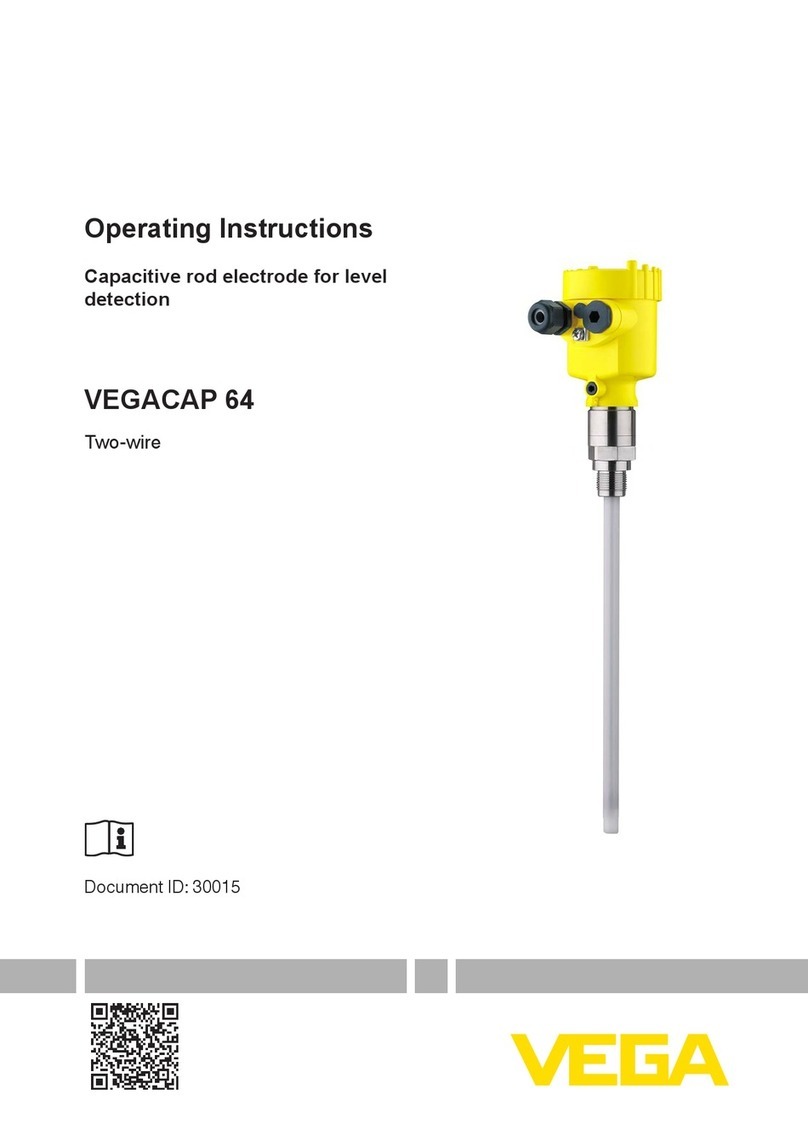
Vega
Vega VEGACAP 64 operating instructions
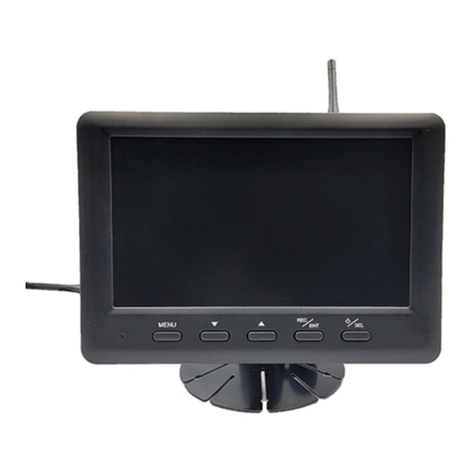
Zorg
Zorg 3201 Installation & operating manual
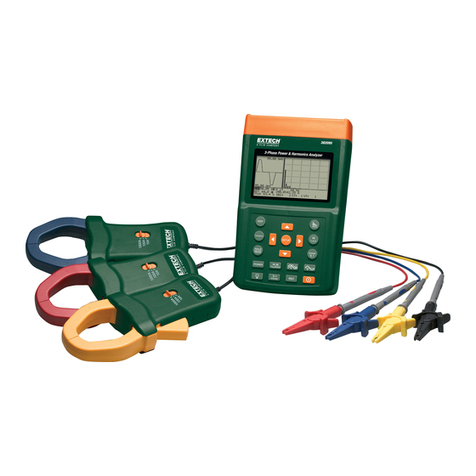
Extech Instruments
Extech Instruments 382095 user manual
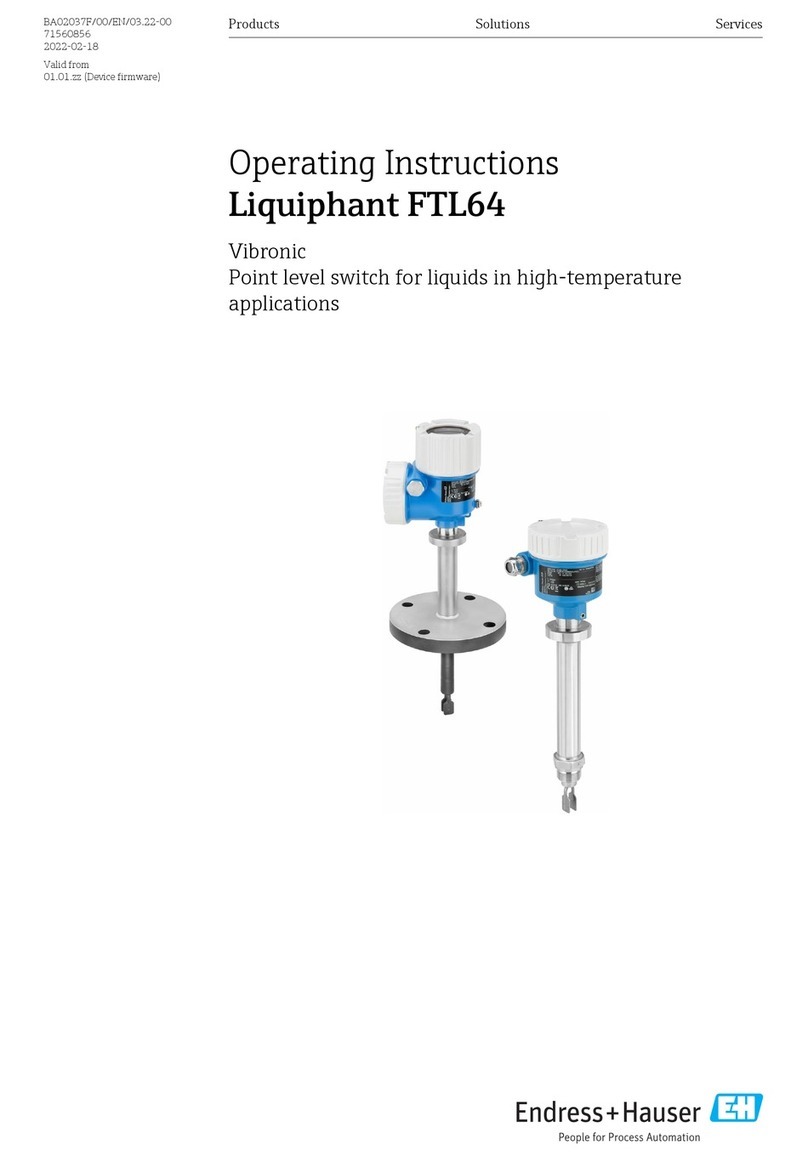
Endress+Hauser
Endress+Hauser Liquiphant FTL64 operating instructions
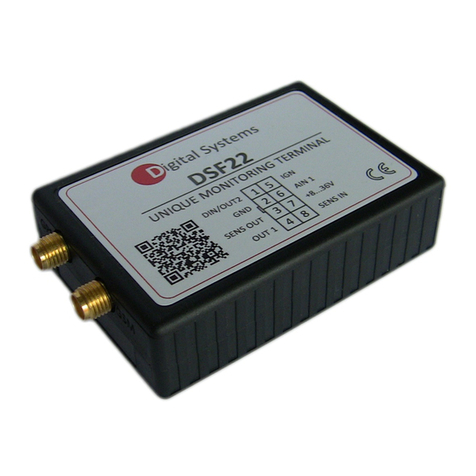
Digital Systems
Digital Systems DSF22 Installation and setup guide


